Note:
1. This article mainly collects some POC-related medical/health monitoring device technology companies and their main products.
2. A senior from Kun Yuan Gene once asked what kind of data has scientific significance, and the key word from the senior was “background”.
3. Taking the recent Verily 10,000-person project (projectbaseline.com) as an example (note: assuming that Verily’s project direction is roughly okay, and excluding: the main concern is that trivial or false trends will be seen in the data), pure genetic sequencing data requires a lot of additional relevant background to have a closer understanding of many complex diseases like cancer: + epigenetics + protein metabolism + electronic medical records + sign monitoring data (POC) + … …
4. This article focuses on technology companies and products related to wearable medical/healthcare devices, and will try to avoid general wearable entertainment and concept devices.
Reference:
Google’s Health Study Seeks 10,000 Volunteers to Give Up Their Medical Secret: The project will scrutinize spit, tears, stool, heartbeats, and genomes to search for new predictors of disease. | by Antonio Regalado, April 19, MIT Technology Review;
Hearing With Your Skin, Printing Liquid Glass, and a Nanocar Race—The Download, April 20, 2017: The most fascinating and important news in technology and innovation delivered straight to your inbox, every day. | by Jamie Condliffe, April 20, MIT Technology Review;
Verily kicks off Baseline study, which seeks to define ‘health’. | by Amirah Al Idrus, Apr 19, Fierce Biotech;
Wearable medical/healthcare devices & Clinical Point of Care
a. Currently, there are quite a few consumer-grade wearable companies and products in the wearable market, but for professional-grade medical wearables, I have not yet learned about the companies or products in this area in China; however, there are some interesting companies abroad.
b. I have organized the following based on personal understanding.
c. Among them, products related to the sports & apparel sector are mainly consumer-grade, and the significance of organizing them lies in the potential for these companies’ technologies and ideas to transition into the professional market in the future. Additionally, I believe these product ideas are quite unique.
d. This article focuses more on professional-grade hard-tech products, which are not necessarily the biggest winners in the market, as it still takes time, manpower, and funds to transition from laboratory to mass production and then to market.
i. Sports & Apparel
1. OMbra: Real-time Monitoring and Adaptive Adjustment of Sports Data
OMsignal is a Canadian company that currently focuses on smart monitoring sports tight-fitting tops. OM has also collaborated with Ralph Lauren to develop The Polo Tech Shirt.
By embedding a large number of electronic sensors in the textile material, it monitors users’ heart rate, breathing, and calorie burn index. By combining with mobile app functionality, it can calculate users’ exercise distance, step frequency, breathing rate, and fatigue index during exercise, thus providing exercise adjustment suggestions at different exercise points.
According to media reports, many of the outfits worn by the US team at the Rio Olympics were from OMsignal, used for coaches to monitor and collect real-time physical indices of athletes during competitions.
It is particularly worth mentioning that OM’s currently marketed product targeting female consumers is the OMbra, which emphasizes comfort in sports bras. I believe the main highlights of this product are its textile materials, design, and the sensor integration scheme, while the intelligence brought by sensor monitoring integration can be considered a concept or added feature, and it is not necessarily very intelligent yet.
Of course, the accuracy of OM’s monitoring data is still at the consumer-grade level and cannot guarantee professional-grade accuracy. However, it is still much more practical than wristbands and addresses some real issues such as washability and long-term wearing comfort, etc.
I am very optimistic about OMbra; it would definitely be an impressive gift for female friends and relatives!

OMsignal Biometric Smartwear
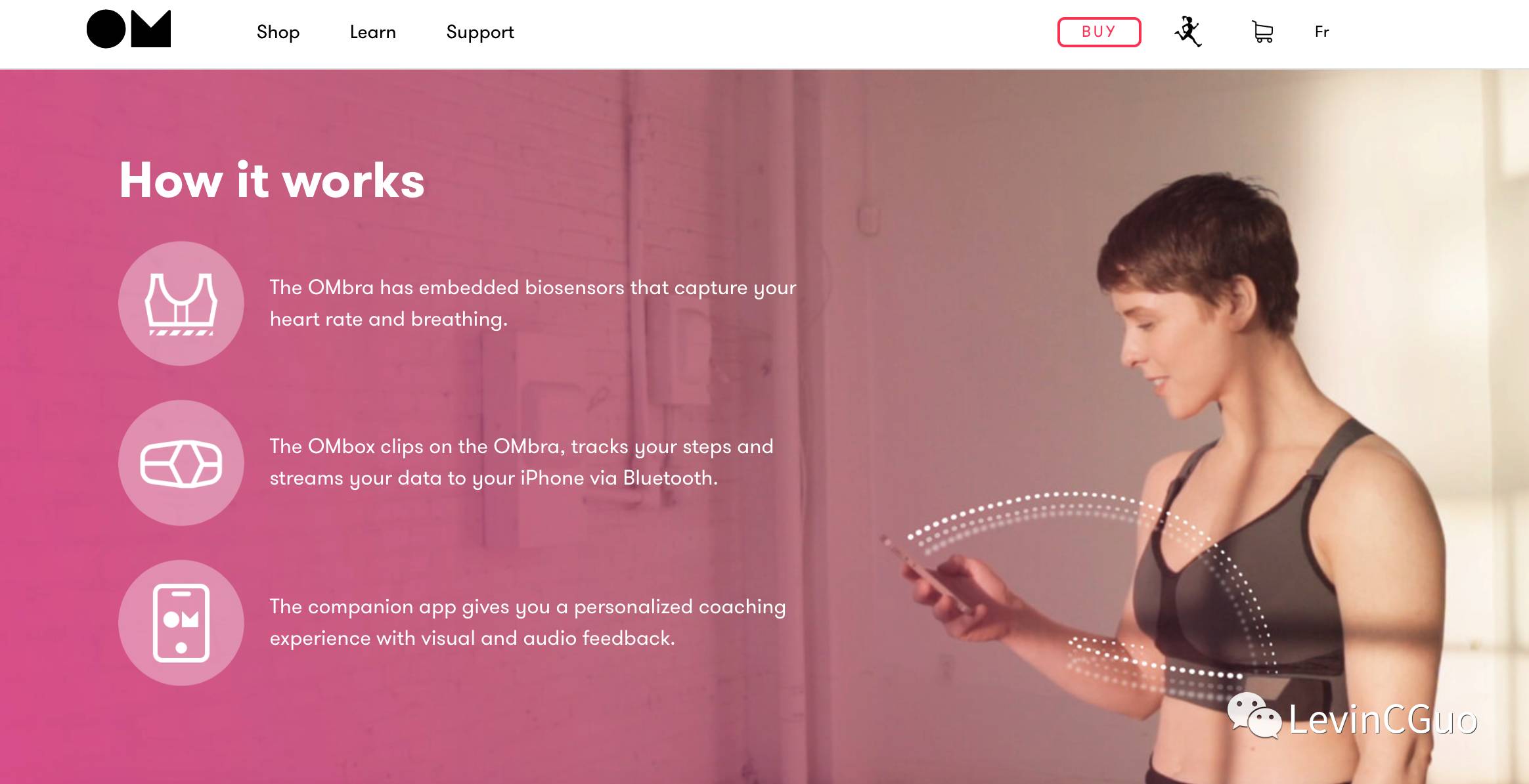
OMbra | Designed for fit, comfort and support. By women, for women: Did you know that your breasts bounce more than 5″ when running? The OMbra has been engineered with patent-pending technology to deliver ultimate fit, comfort and support so you can enjoy every step of your run.
2. Under Armour’s Digital Health Community
Under Armour launched a digital health community connected fitness platform, focusing on newly released sports shoes with embedded electronic sensors.
Although it may just be another gimmick in the consumer market, it is still a story told by a traditional industry at CES, and given that Under Armour is currently the third-largest sports apparel giant after Adidas and Nike, it is worth mentioning.
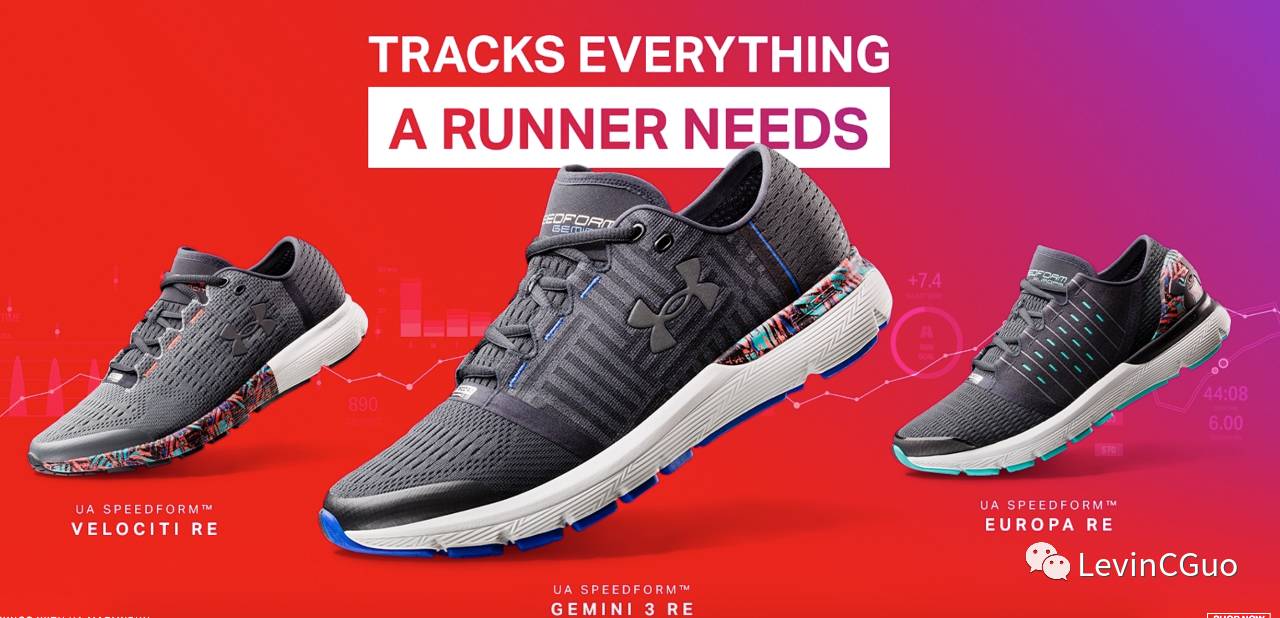
New Under Armour Shoes with Embedded Electronic Sensors | underarmour.com
3. Nobitech: Mosquito-repellent Material Clothing
Nobitech integrates Skintex® MRIII mosquito-repellent technology into clothing, developing mosquito-repellent clothing specifically for outdoor activities. The main highlight is: repelling mosquitoes that may carry the ZIKA virus.

Nobitech cover | nobitech.us
4. Coolcore: Automatic Cooling Material Clothing
The clothing uses materials that promote capillary evaporation circulation function, adjusting the comfort of wearing while sweating during exercise.

coolcore laboratory data | coolcore.com
5. Digitsole: Temperature-Controlled Smart Insoles
Digitsole has launched the warm series smart insoles that track exercise data and adjust insole temperature, allowing your feet to stay warm in winter and cool in summer.
Of course, the smart insoles also casually add functions like embedding electronic sensors to detect steps, step frequency, gait, distance, etc. There are some flexible sensor-based smart insole products on the market, such as 安润普SoftceptorTM technology smart insoles, and Xiamen’s podoon pressure-sensitive smart insoles.
Additionally, Digitsole is also developing sports shoes with intelligent cushioning based on pressure in different foot areas, so let’s wait and see.
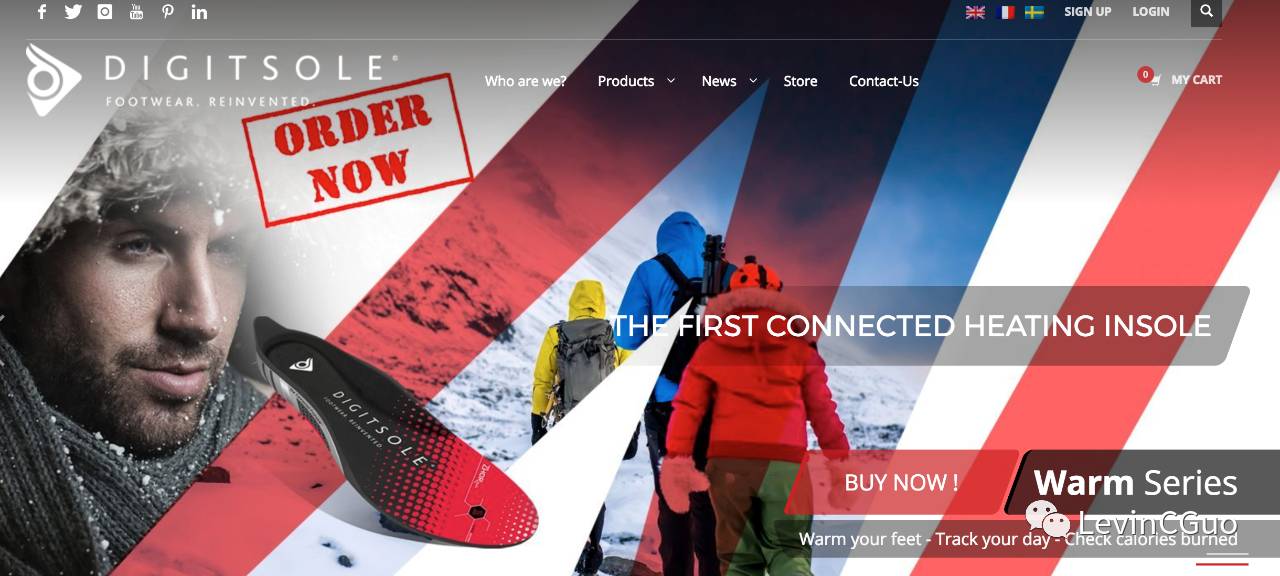
warm series smart insoles | digitsole.com
ii. Professional-grade Mobile Devices
1. MC10: BioStamp Flexible Material Medical Health Leader (Sports Rehabilitation, Heart Rhythm, Neurodegenerative Diseases)
A company focused on medical diagnostic platforms, its main BioStamp system is composed of mesh circuits and flexible sensors. Users can stick it on their body and can normally shower and rub it, mainly used for monitoring different physiological signs.
Currently developed BioStampRC, WiSP, BioStampMD: three platforms are basically in the medical cooperation stage.
The BioStamp system is currently mainly applied in sports rehabilitation, neurodegenerative diseases, and post-medication heart rate/rhythm monitoring scenarios.
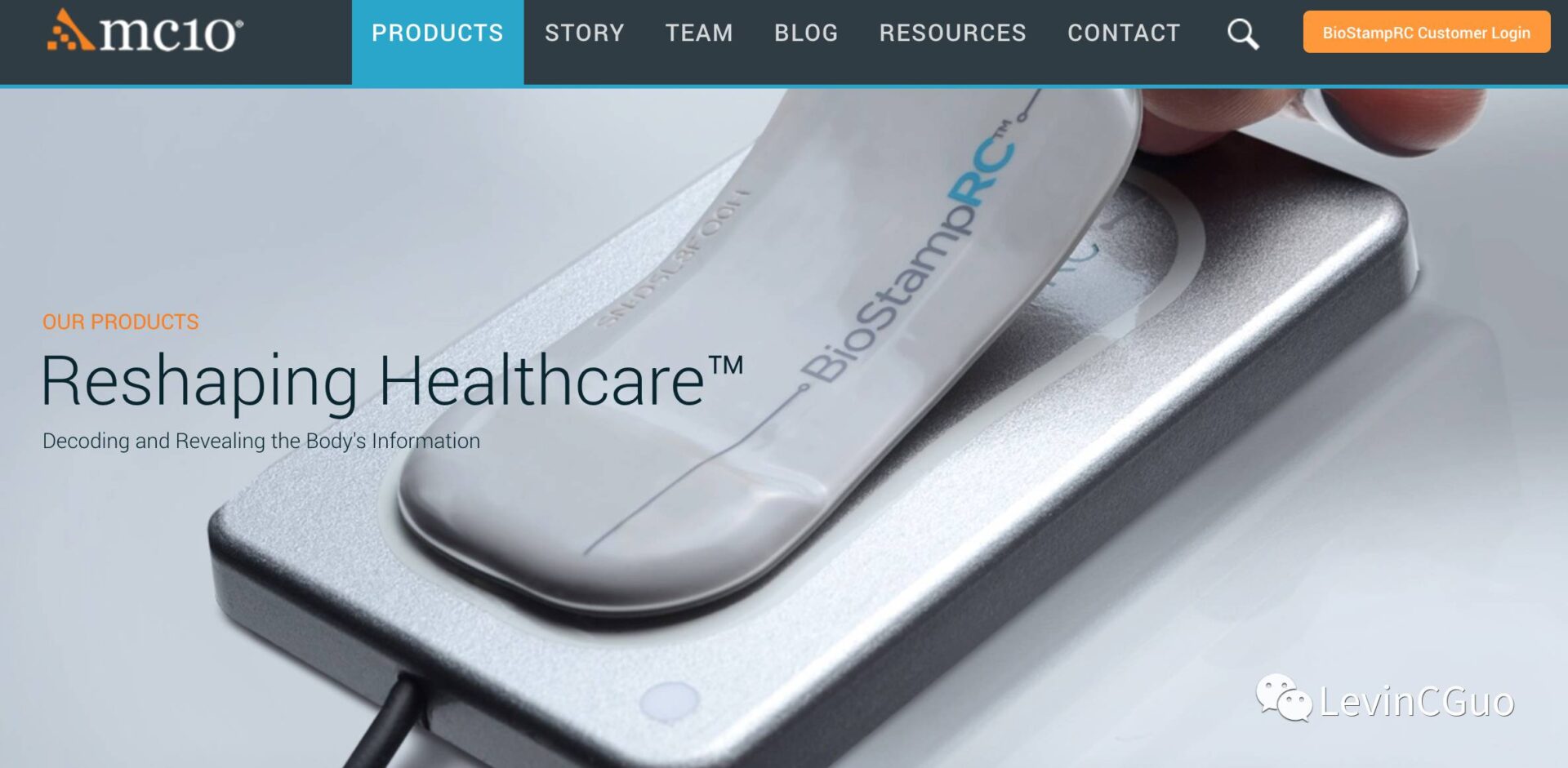
MC10 BioStampRC | mc10inc.com
2. Lys Technologies:
A product with a clear idea, mainly monitors the light conditions in the user’s environment in real-time to prompt the user to adjust the light according to their current needs, managing the impact of light on the user’s mental state.
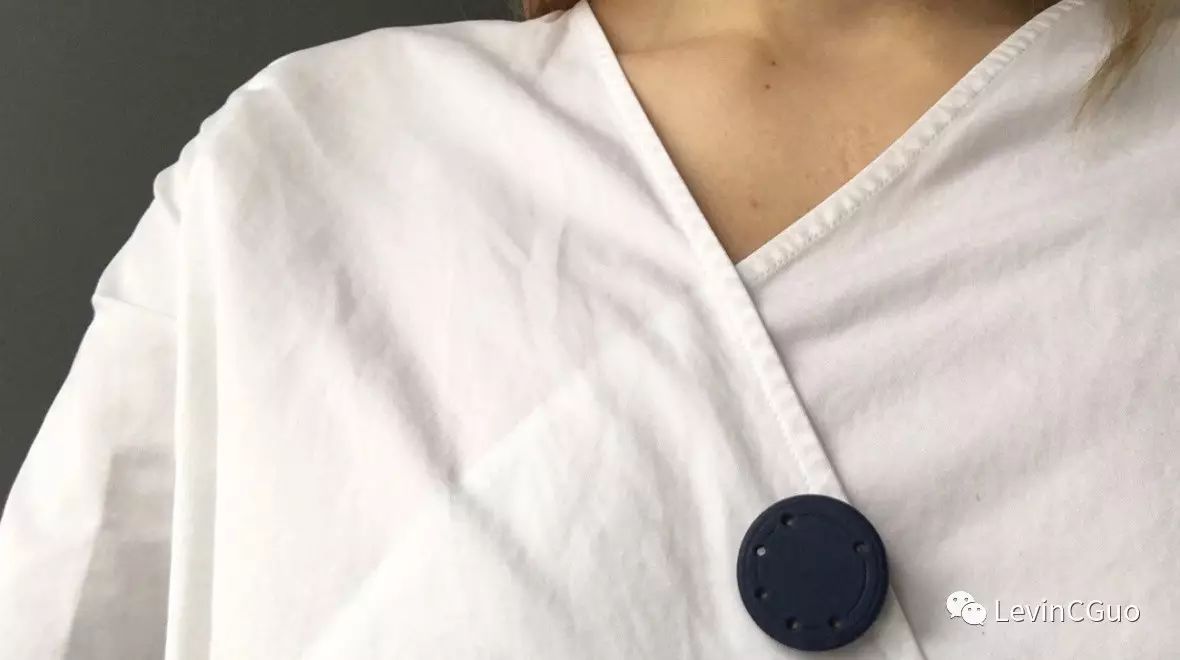
Lys badge | lystechnologies.co.uk
3. Butterfly Network: Mini Ultrasound Imaging Device
Founded by MIT professor Jonathan Rothberg, the company mainly develops platform-based ultrasound imaging devices.
Butterfly Network’s biggest feature is that its imaging platform device (capacitive micro-ultrasound transducer) can be embedded in a Pad or mobile phone (meaning: cheap and portable). Of course, the backend image synthesis, recognition, and analysis still involve a considerable amount of AI algorithms.
Imagine how exciting and promising it is to have a phone that can take pictures.
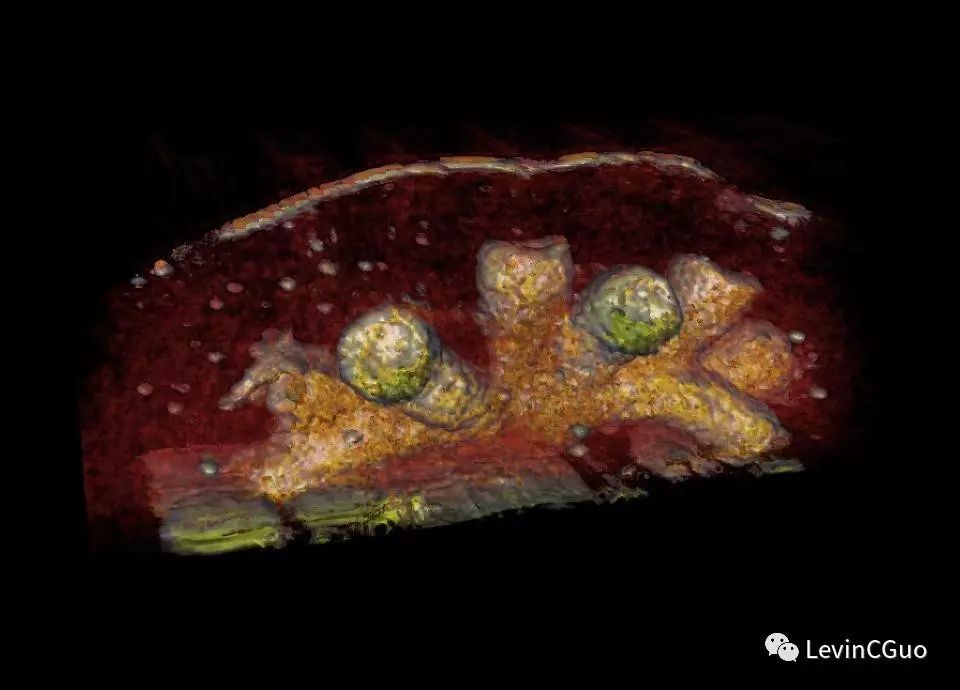 A kidney imaged with Butterfly’s technology | butterflynetinc.com
A kidney imaged with Butterfly’s technology | butterflynetinc.com
4. Cardio Net: Remote Real-time Heart Rhythm Monitoring
A wearable ECG monitoring device that mainly solves the inconvenience of traditional heart monitoring data devices used by patients.
This product has been approved by the FDA and is worth mentioning compared to similar products under development.

MCOT ECG Monitoring Device | cardionet.com
5. Thync: Sleep Decompression
Mainly applied in scenarios of excessive stress, anxiety, or long-term sleep of less than 5 hours to regulate sleep quality and reduce stress.
The main feature of this product is still based on early data collection and analysis.
By monitoring users’ daily rest patterns, combined with Thync Relax neural potential stimulation, electronic pulses are sent to targeted locations in the brain, along with daily suggestions to help users adjust their mental state, allowing the brain to enter a relaxed or excited state.
It is worth mentioning that the Thync Relax product has received FDA safety certification.

Getting good vibes | thync.com
6. Vivalnk: Flexible Material + Wireless Charging
Vivalnk mainly focuses on the development of electronic skin devices eSkin based on flexible wearable devices for wireless charging and data transmission.
Compared to many existing flexible products on the market, Vivalnk mainly focuses on real-time monitoring of medical-grade data.
In fact, the hard technology of flexible thermal patches mainly lies in its flexible battery and wireless charging technology. I believe that regardless of how fancy many similar products on the market claim to be, the patent tracing results related to these two technologies will not surprise me much.
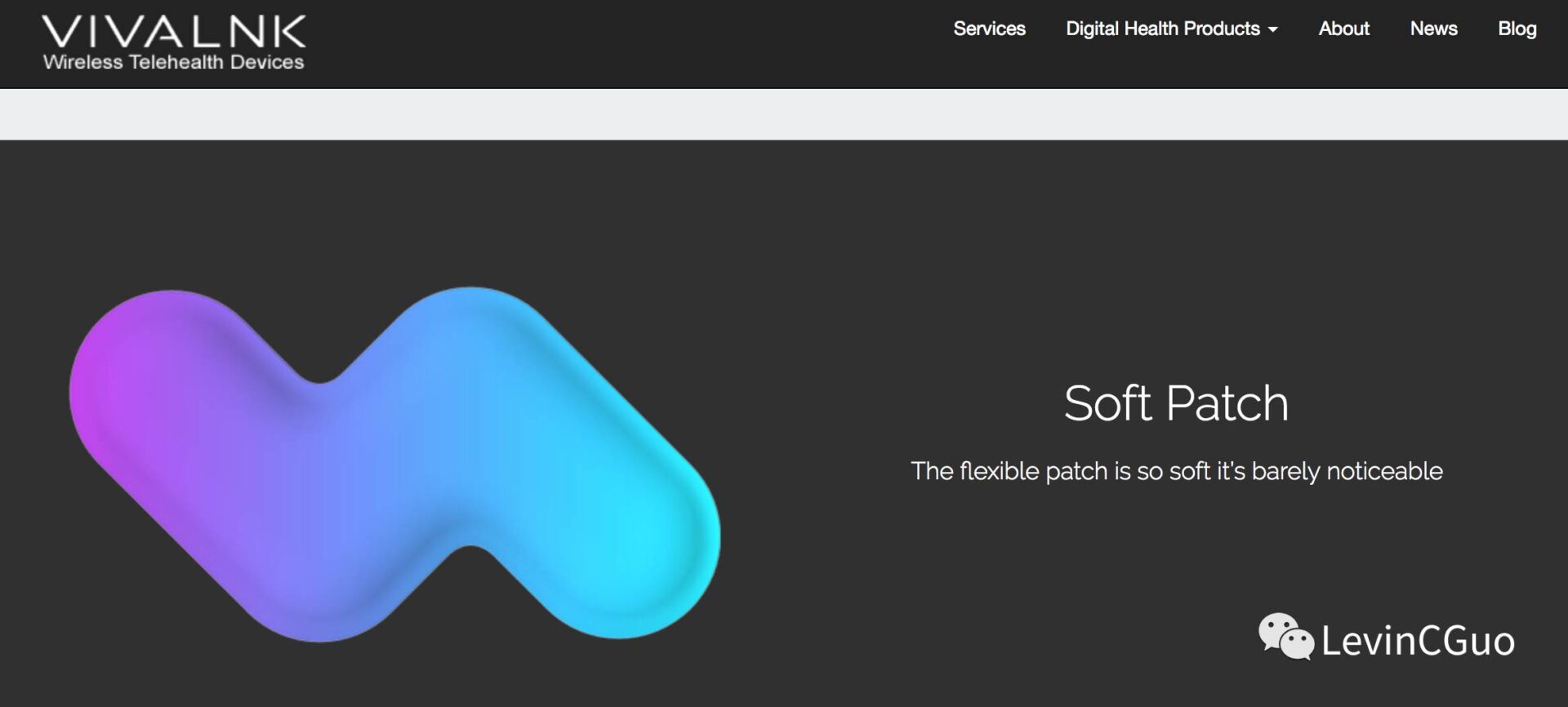
VivaLnk Fever ScoutWireless Charging Thermal Patch | vivalnk.com
7. REX Bionics & Cyberdyne HAL: Intelligent Exoskeleton
The intelligent exoskeleton field is mainly used for patients with residual limb capabilities, assisting in limb movement and rehabilitation training.
Among them, I particularly like REX and Cyberdyne for their unique features and technological feel.
REX Bionics’ biggest feature is its product’s stability, allowing patients with complete loss of sensation in their lower limbs to walk independently through upper limb operation.
Cyberdyne is a Japanese company whose HAL robot series is mainly used for patients with some residual limb movement capabilities, assisting in limb movement, applicable to scenarios such as polio and the elderly. The HAL robot features sensors embedded in the exoskeleton that assist users in making corresponding movements based on sensed limb actions.
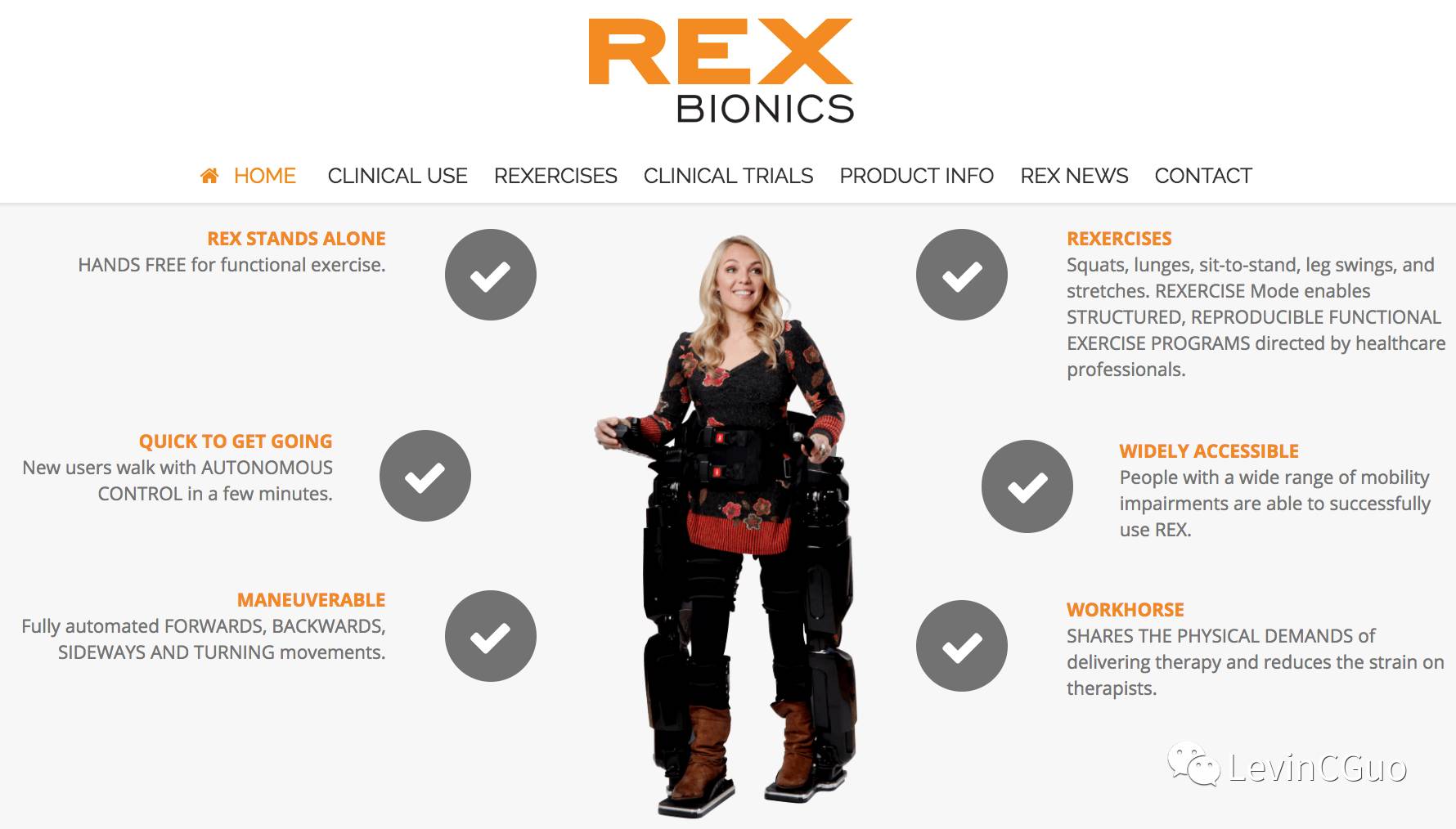
REX Bionics Intelligent Exoskeleton Robot | rexbionics.com
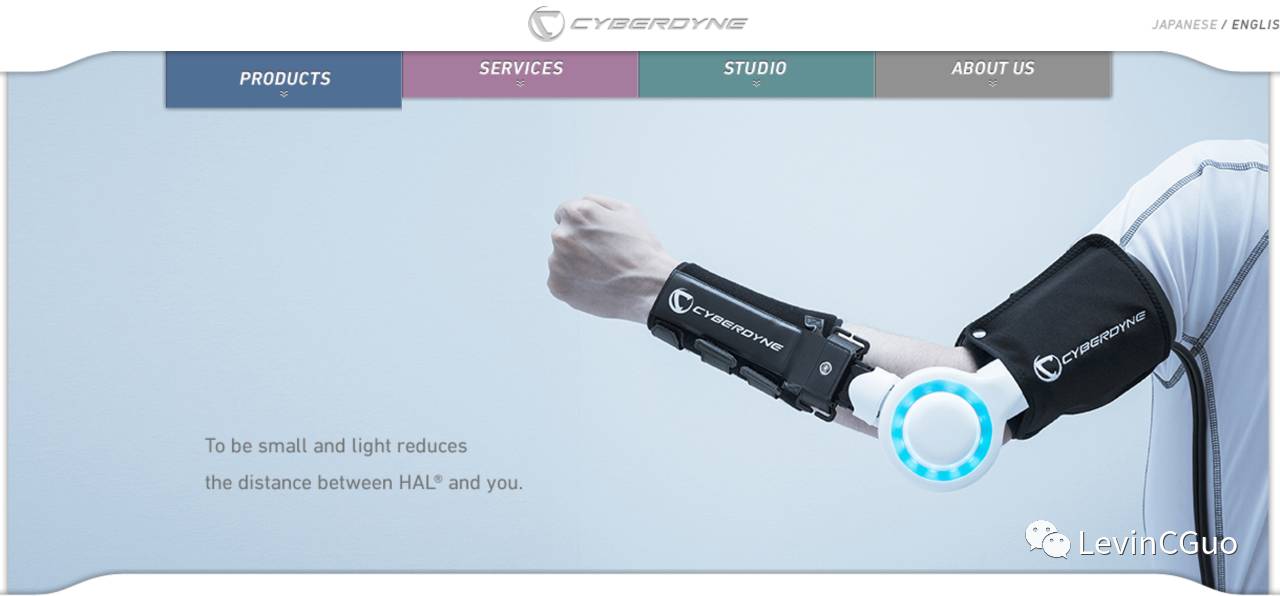
Cyberdyne HAL Series Exoskeleton Robot | cyberdyne.jp
8. Hocoma: Muscle Movement Rehabilitation
Hocoma is a Swiss company focused on pain and muscle rehabilitation.
In the wearable field, Hocoma’s Valedo is mainly applied in rehabilitation scenarios for back pain and related complications, using its hardware devices (two sensors) to record data, allowing users to play gravity-sensing games on the screen to achieve muscle training and alleviate pain for rehabilitation purposes.
The Hocoma Valedo product has already received FDA safety certification.
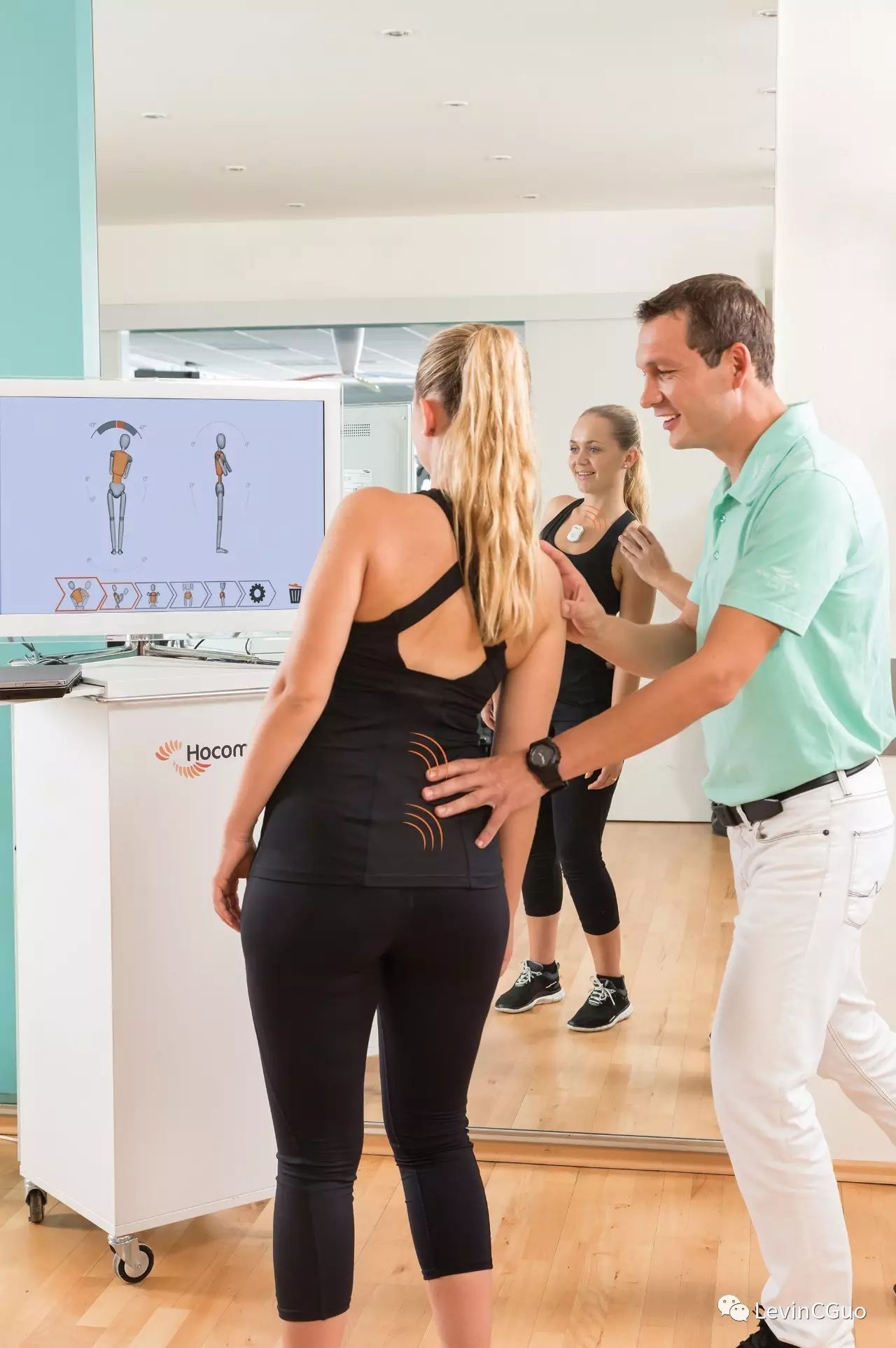
Hocoma Valedo | hocoma.com
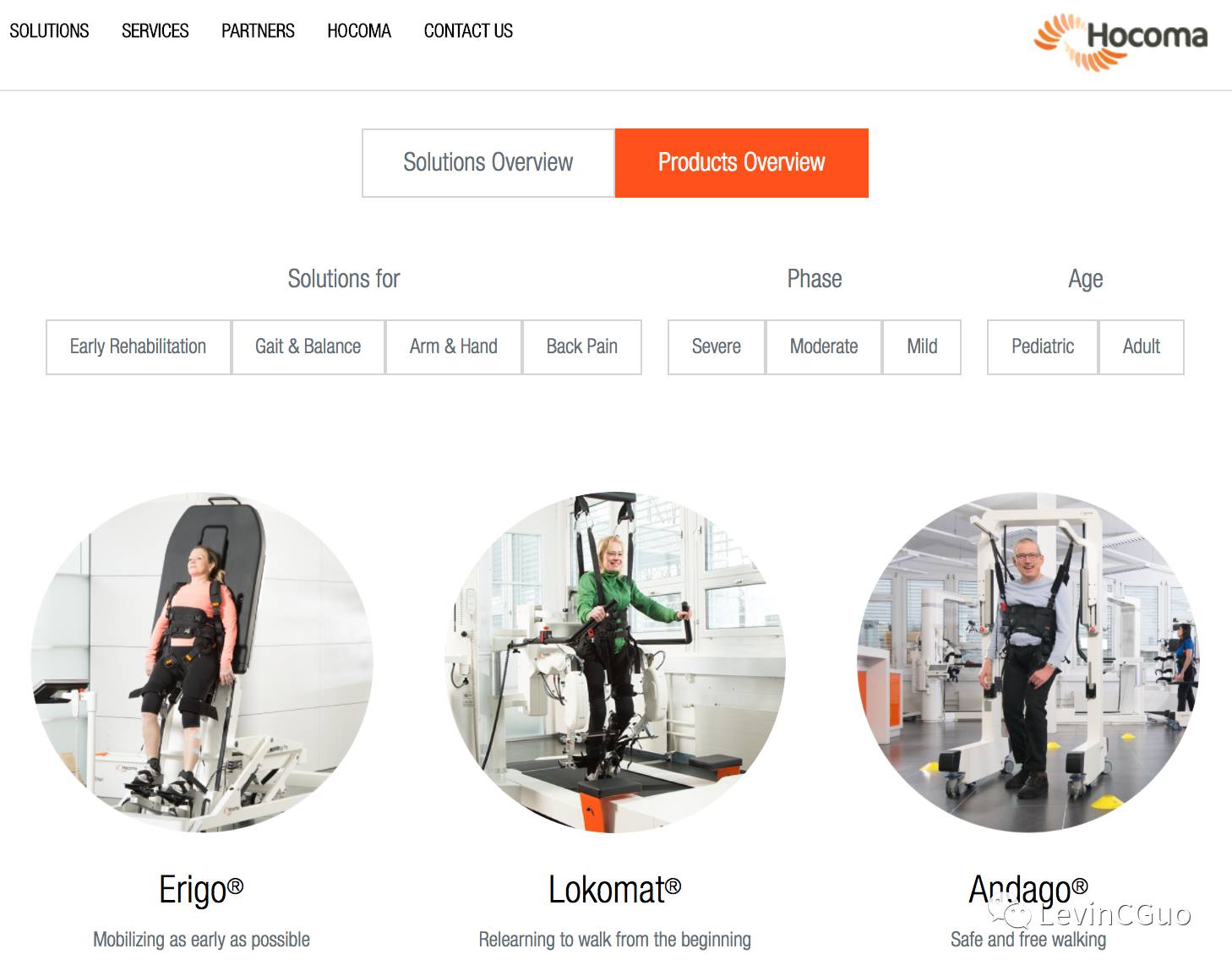
Hocoma Robot Rehabilitation Product Series | hocoma.com
9. Halo Neuroscience: Professional Sports Training Neural Stimulation Equipment
Halo Neuroscience’s main product is a head-mounted headset covered with neural electrodes, mainly applied in professional sports training scenarios, tracking the electrical signals from the brain regions involved in movement during training to assist in adjusting athletes’ training plans and intensity.
This product has already been applied in training scenarios for Olympians, NFL players, and interestingly, Halo Neuroscience technology is also used in training scenarios for US Navy SEALs.
The technology of Halo Neuroscience belongs to the professional medical level.
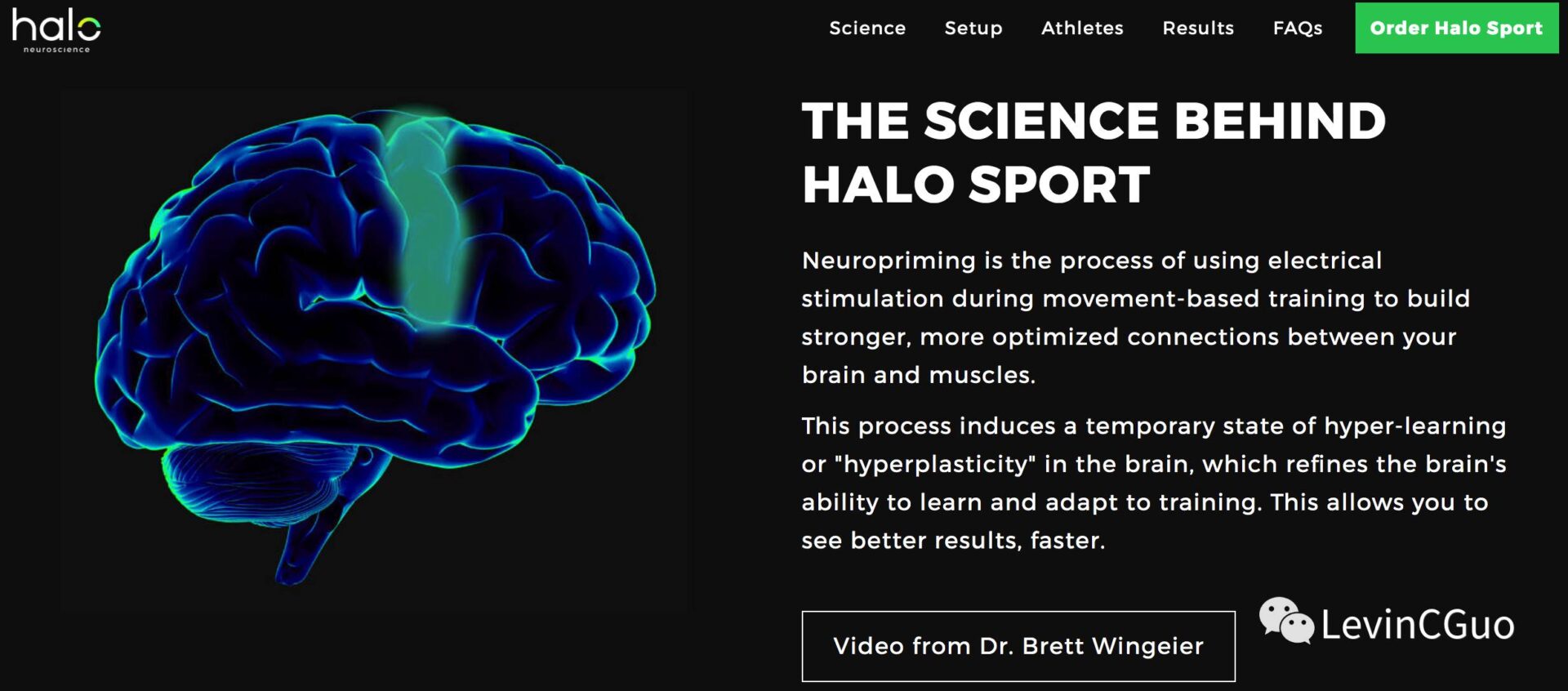
Halo Neuroscience sport | haloneuro.com
10. Elvie: Focused on Women’s Health Wearable Devices
Elvie is a London-based company focused on women’s health wearable devices.
Elvie’s main wearable product, the pelvic floor tracker, is primarily based on the smart Kegel trainer application scenario: Kegel muscle training for natural childbirth.
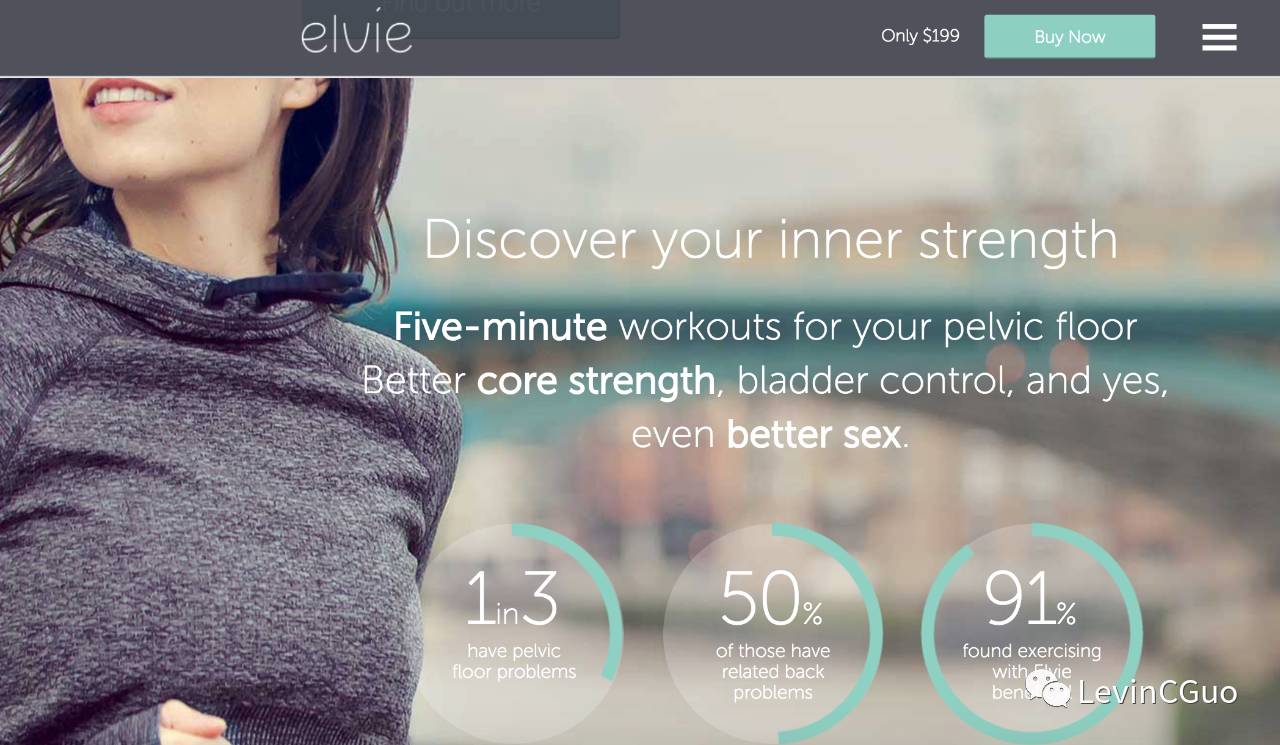
Elvie’s first main product: Kegel Tracker | elvie.com
11. Cerevast: Stroke Treatment and Recovery
Cerevast is a company focused on stroke treatment and rehabilitation, developing a headset product that uses ultrasound for emergency treatment and rehabilitation of stroke patients.
Cerevast’s technology for stroke treatment and recovery mainly involves using ultrasound waves to shatter blood clots, combined with drug treatment to expel clots. Additionally, the home product is also based on this principle to assist in drug absorption (blood-brain barrier).
Currently, its main products are involved in acute stroke treatment, stroke rehabilitation, and also extend to sleep state regulation products.
Neurosonx SR: Used in stroke recovery scenarios.
CLOTBUST ER: Used in acute stroke treatment scenarios.
PIPELINE: Home stroke recovery and regulation products.
Neuros: Used in sleep state regulation and stress relief.
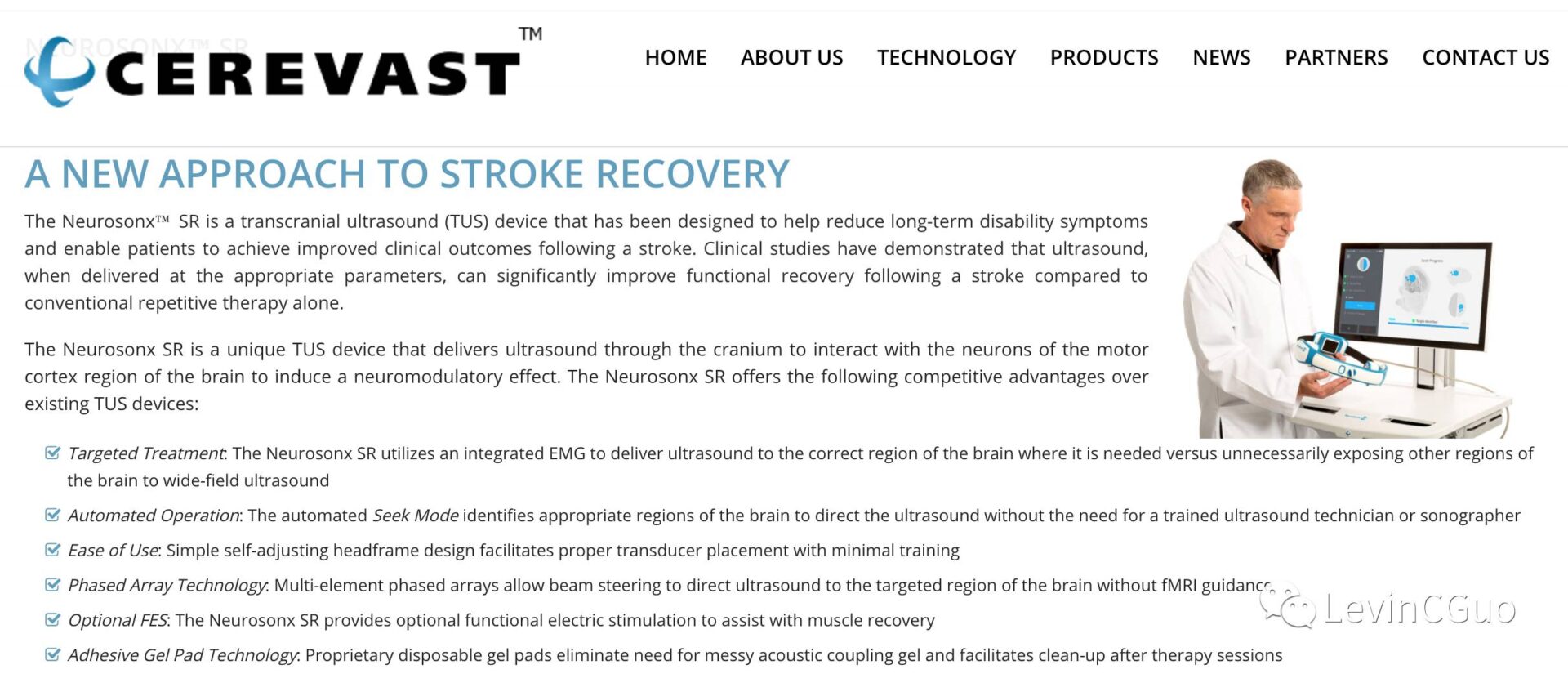
Neurosonx SR | cerevast.com
12. Wicab: Brain Imaging for the Blind
Wicab’s amazing Brain port product is mainly used for 3D world imaging for the blind, which is quite impressive.
The Brain port uses a front-mounted miniature camera to capture video in front of the user, converting light signals in real-time into equivalent intensity electrical signals, which stimulate the tongue through electrodes. The blind can perceive the electrical signals on their tongue, forming concepts in the brain’s visual area to perceive dynamic information about the external 3D world.
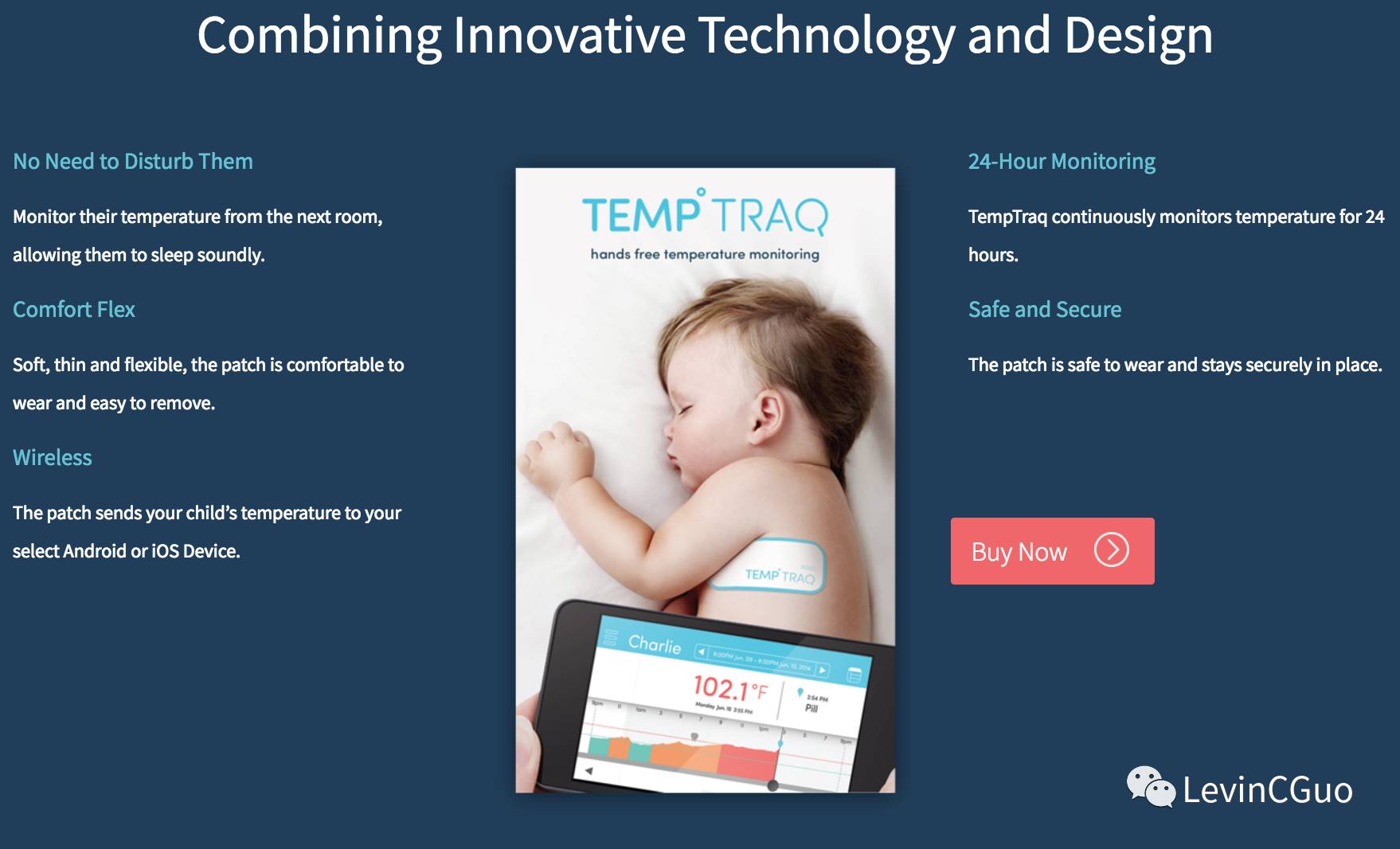
Wicab Brain port | wicab.com
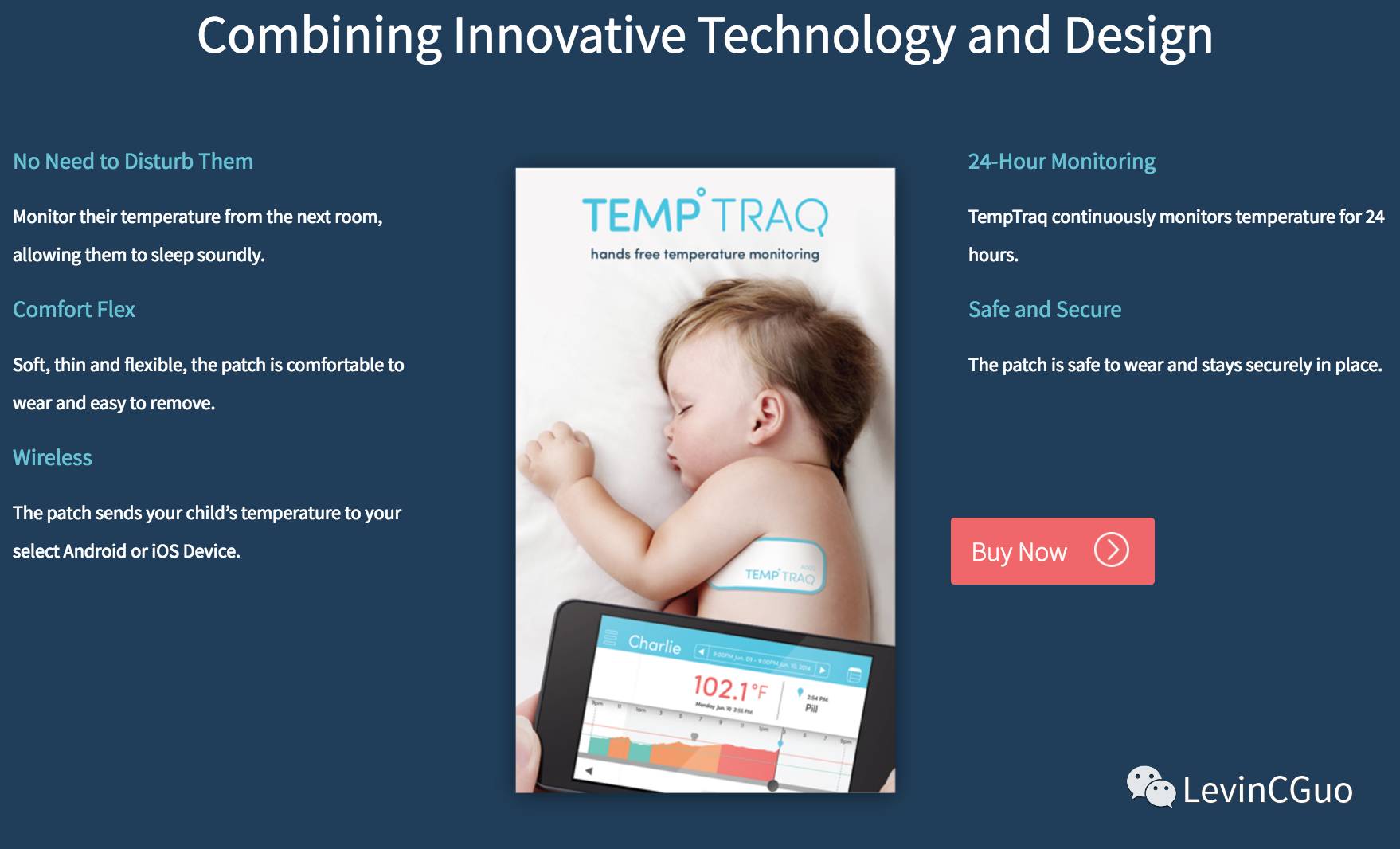
Wicab Brain port founder | wicab.com
13. Nano Sequencing: Handheld Gene Sequencing
The two main companies currently leading handheld sequencers are Oxford Nanopore and Quantu MDx, who are entangled in patent issues.
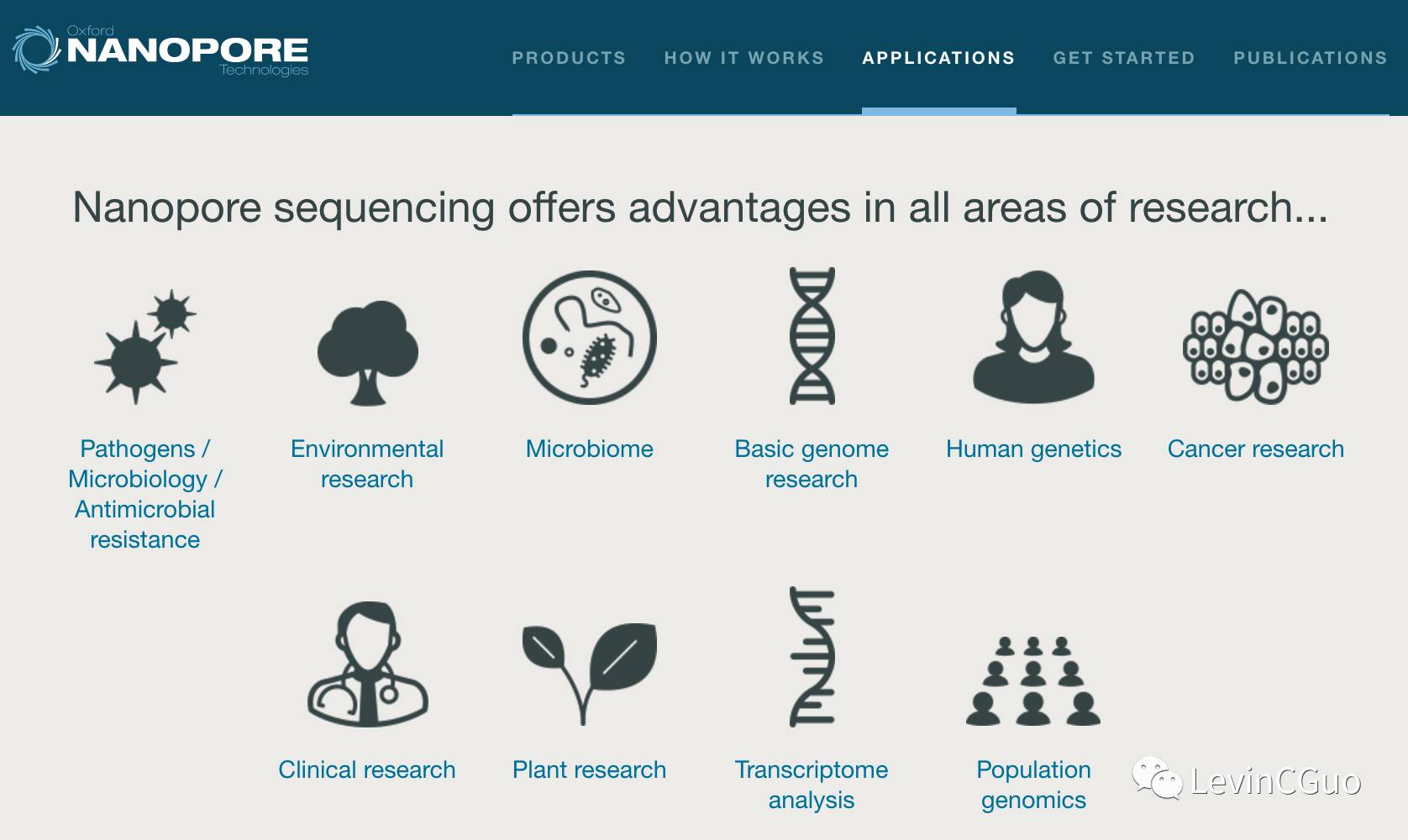
Nanopore handheld sequencing application scenarios | nanoporetech.com
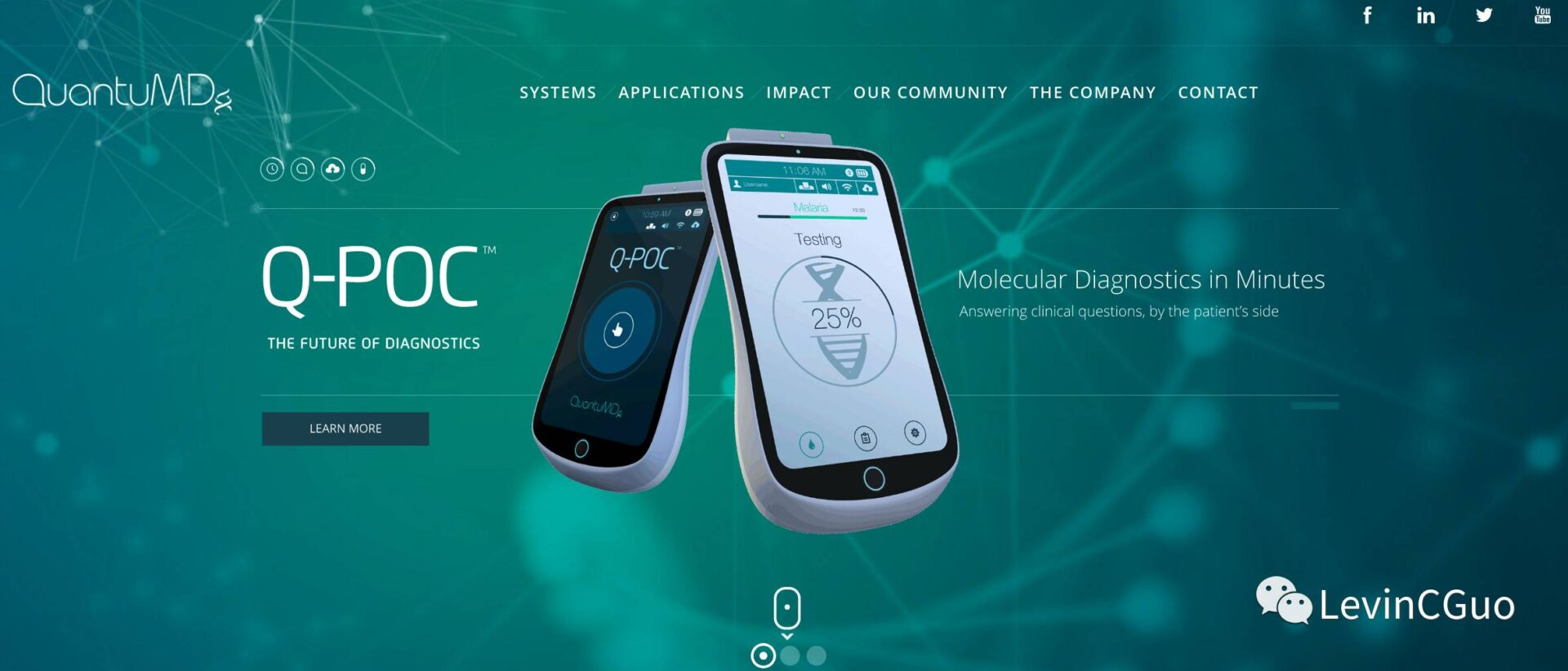
Q-POC Handheld Sequencer | quantumdx.com
14. Scanadu: Vitals/Urine Focused Medical Rapid Diagnostic Products
Scanadu is a company focused on small home medical data monitoring devices, mainly developing medical portable devices that monitor users’ vital signs through image analysis, molecular diagnostics, sound analysis, data analysis, and other multidimensional methods.
Notably, its Scanadu Urine and Scout Devices (Vitals) products are quite well-known.
Scanadu Urine is mainly applied in urine testing scenarios for diabetes, pregnancy, and smokers, and its simplicity and convenience in operation, along with its data sharing with the primary physician, are significant features of its intelligence.
The Scout Devices (Vitals) product prototype mainly monitors users’ heart rate, body temperature, and blood pressure. Although the product was highly praised upon launch, recent news indicates that Scanadu has announced it will officially withdraw from FDA approval on May 15, 2017, and we look forward to its comeback.

Scanadu Urine | scanadu.com

Scout Devices (Vitals) | scanadu.com
15. POC Medical Systems Inc: Rapid Diagnosis of Breast Cancer
POC Medical Systems’ current main product is the Pandora CDx device for rapid breast cancer detection, mainly composed of a small centrifuge and detector, which can obtain the blood indicators required for breast cancer detection within 15 minutes of collecting blood samples, with an accuracy rate of 91.67%.
I personally feel that Pandora CDx is quite noteworthy, as the POC in the IVD field is significantly innovative.
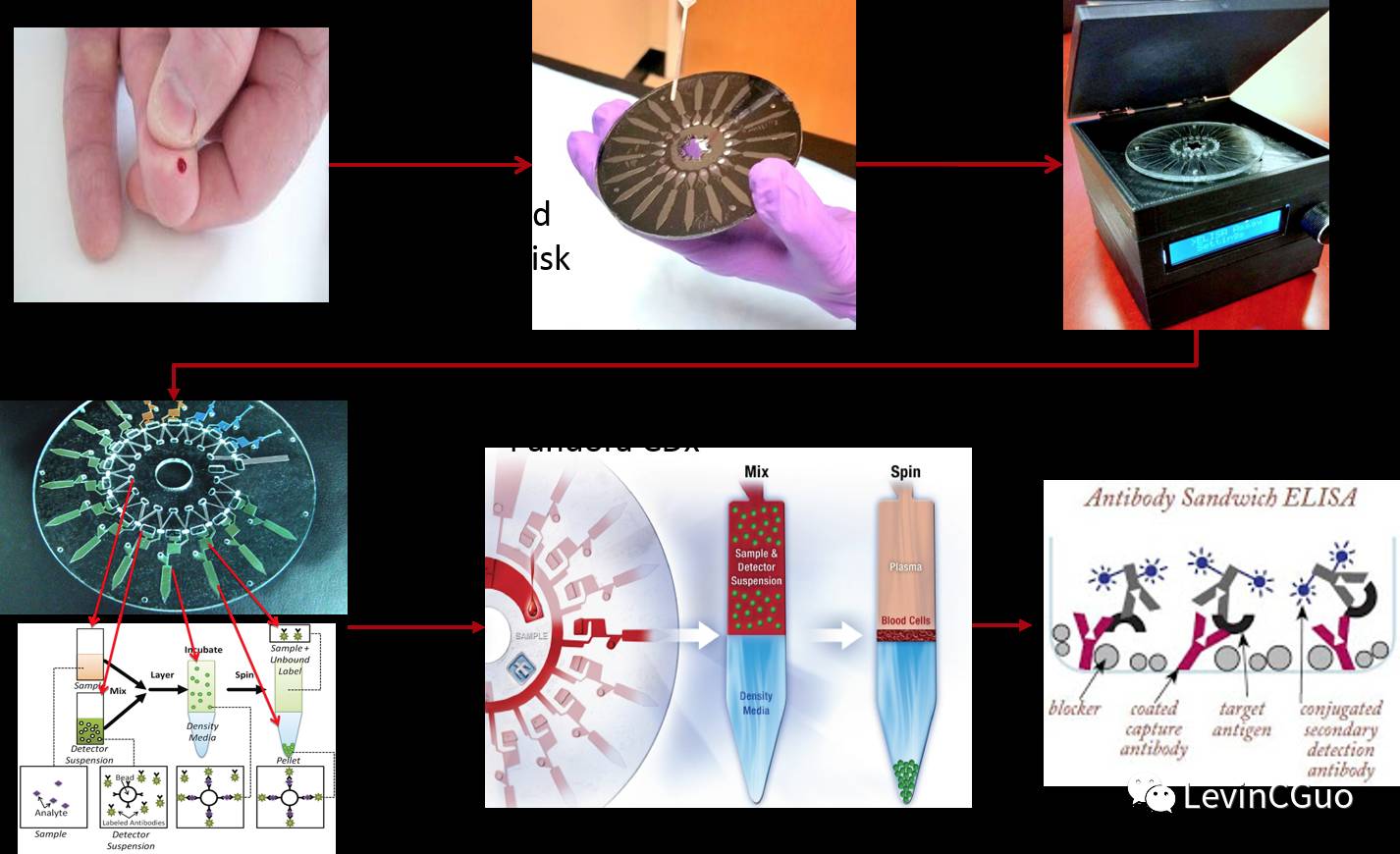
POC Medical Systems Rapid Breast Cancer Diagnosis Magic Box | pocmedicalsystems.com
Reference: 20 hottest wearable tech startups to watch: These small companies are making big waves in the world of wearables | by The Wareable Team, April 12, 2017
Link: www.wareable.com/wearable-tech/best-wearable-tech-startups
iii. Flexible Electronics
Flexible electronics involve: flexible sensors, flexible printed circuit boards, flexible batteries, flexible displays.
Imprint Energy: Flexible batteries;
Blue Spark Technologies: Flexible batteries;
Royole Technology: Flexible displays and flexible sensors;
Recommended public account 【IntelligentThings】: Flexible electronics innovation special.
Link:http://mp.weixin.qq.com/s/xW90hl9sbv1BrrigvECaHQ
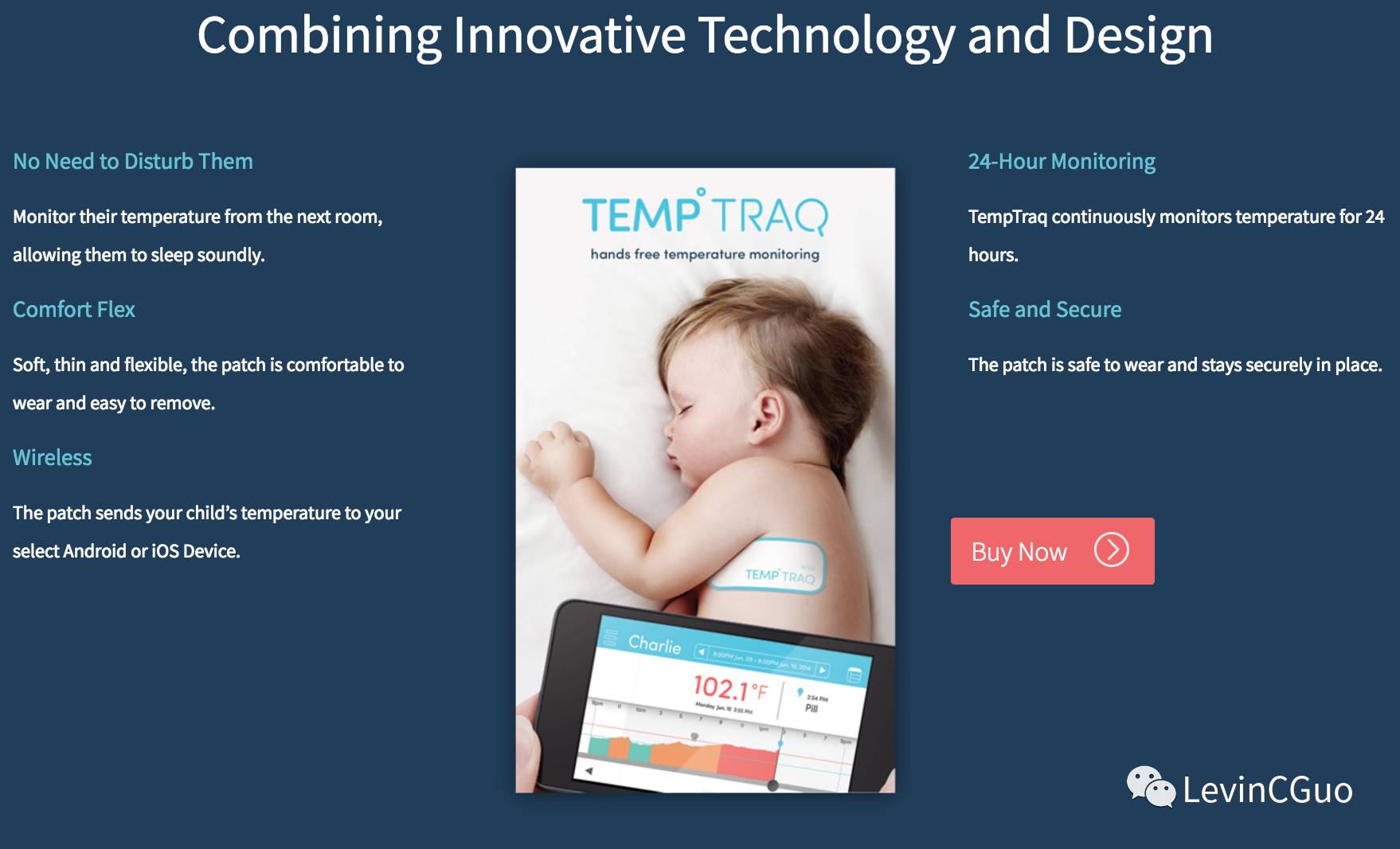
Imprint Energy Flexible Battery | imprintenergy.com
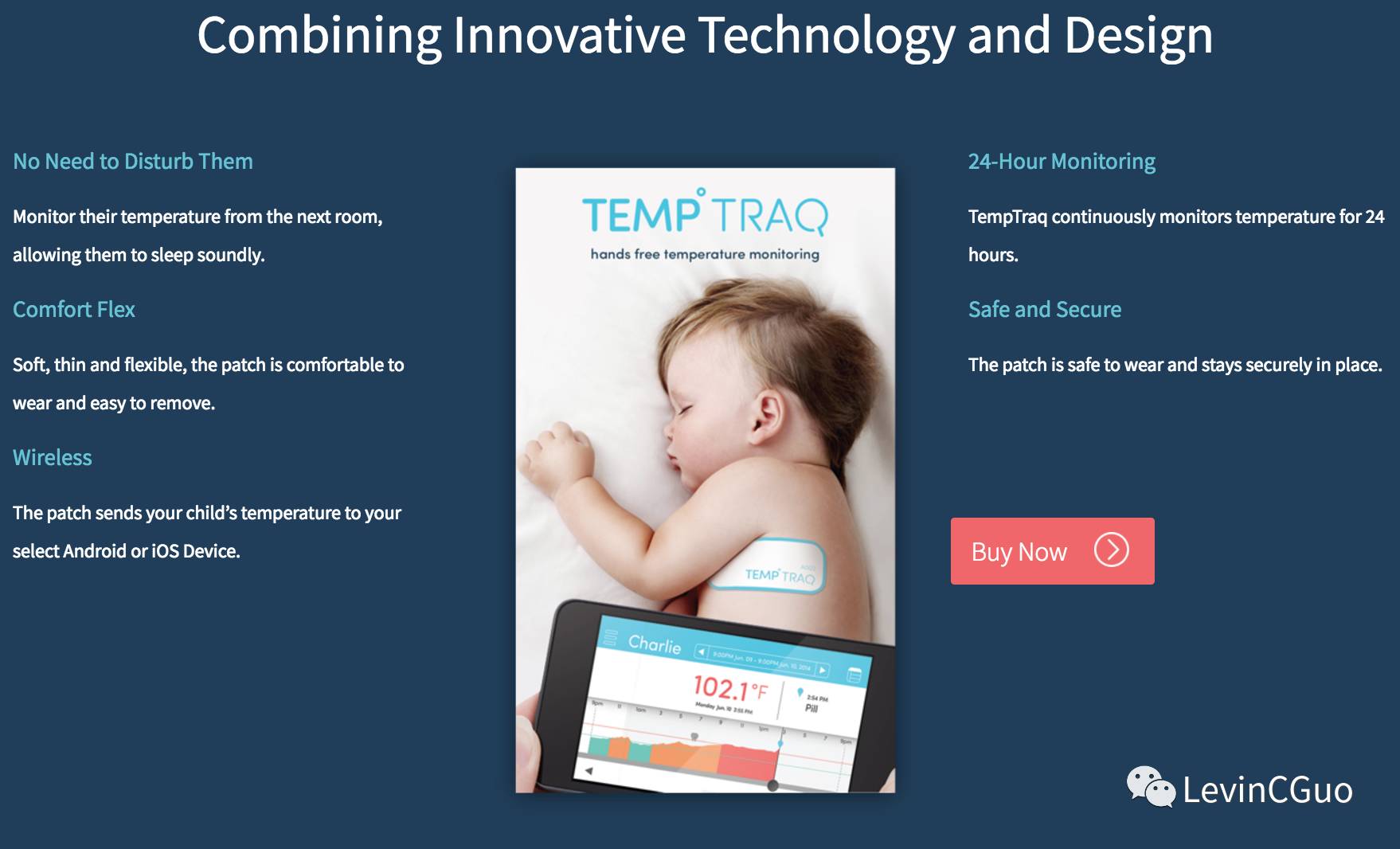
Blue Spark Flexible Battery Technology External Startup Temp Trap Application Scenario | bluesparktechnologies.com
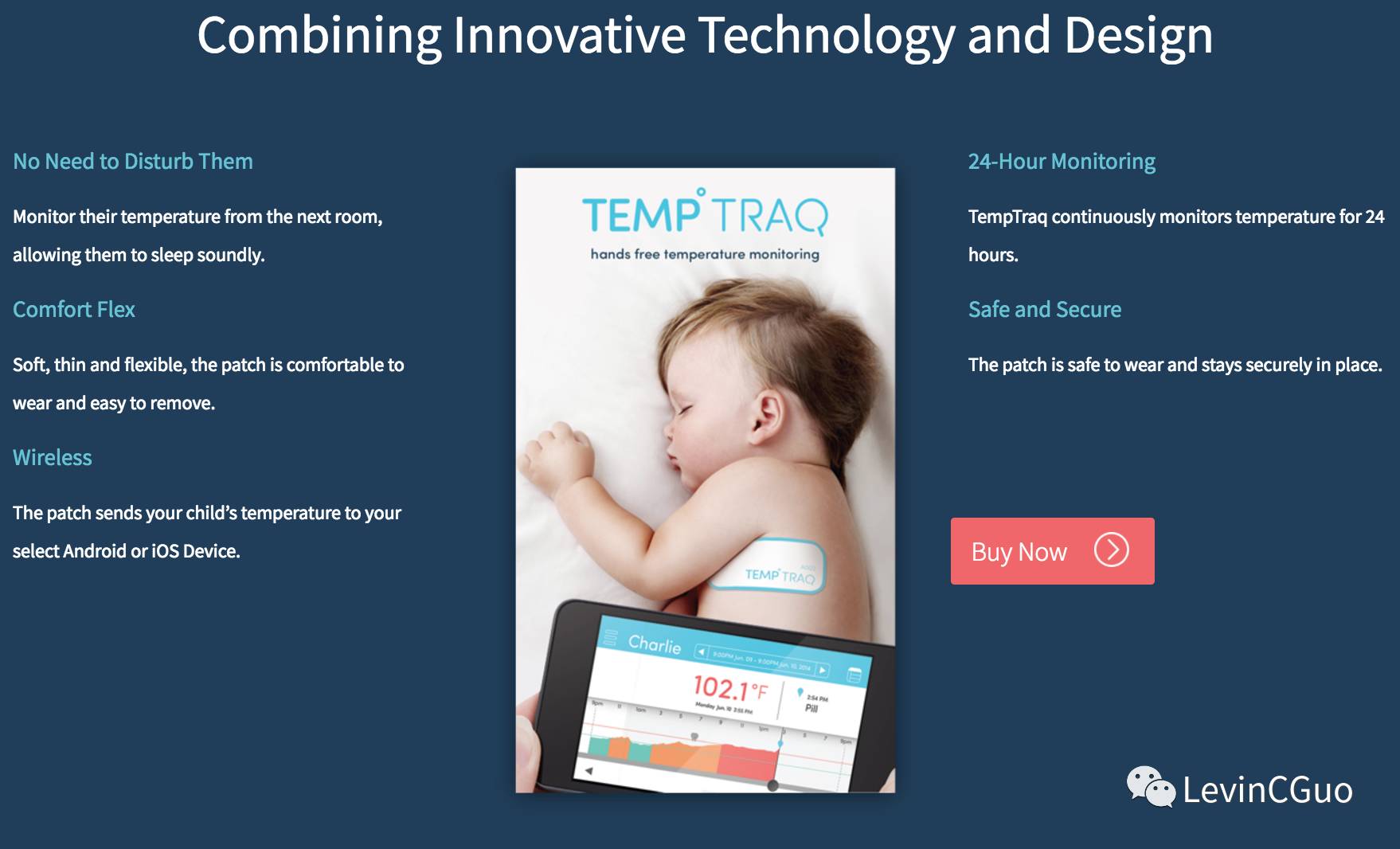
Royole Technology Flexible Sensor | royole.com
iv. Wireless Charging
WirTricity: Magnetic Resonance Wireless Charging Technology.
Wireless charging technology mainly includes milliwatt-level RF technology, low-power device ultrasound charging, and high-power magnetic resonance charging.
I personally feel that besides the easily understood wireless charging for PCs, mobile phones, and electric vehicles, the wireless charging of wearable devices in the medical field is also a very demanding area that can indeed solve some critical clinical problems.
For example, the scene shown in the image below, as well as the most commonly used thermal patch wireless charging scenarios.
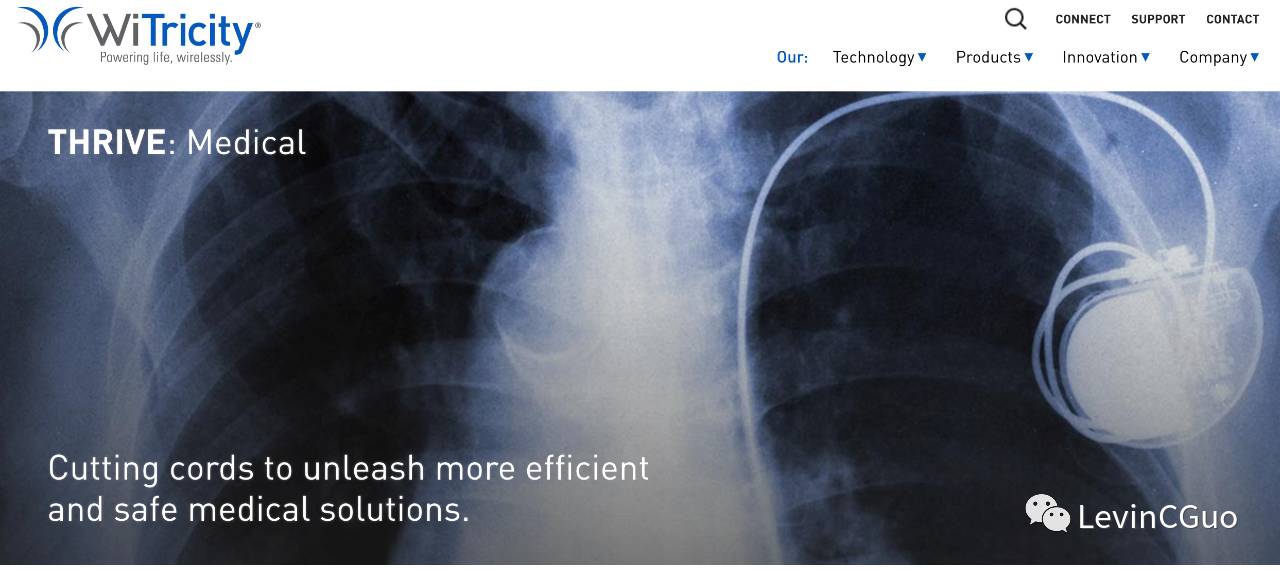
Wireless charging medical health application scenario: Wireless charging for cardiac pacemakers | witricity.com
V. Others: In the Cloud
Gem OS: Blockchain Electronic Medical Record Solution
The biggest feature of applying blockchain technology in medical scenarios is its security and shareability, which is more conducive to ensuring the privacy and security of personal medical data while enhancing the accessibility of medical institutions’ research data and doctors’ access to patient data.
Gem OS is a rare company I have seen that focuses on electronic data solutions for medical and health scenarios, and I am very optimistic about it.
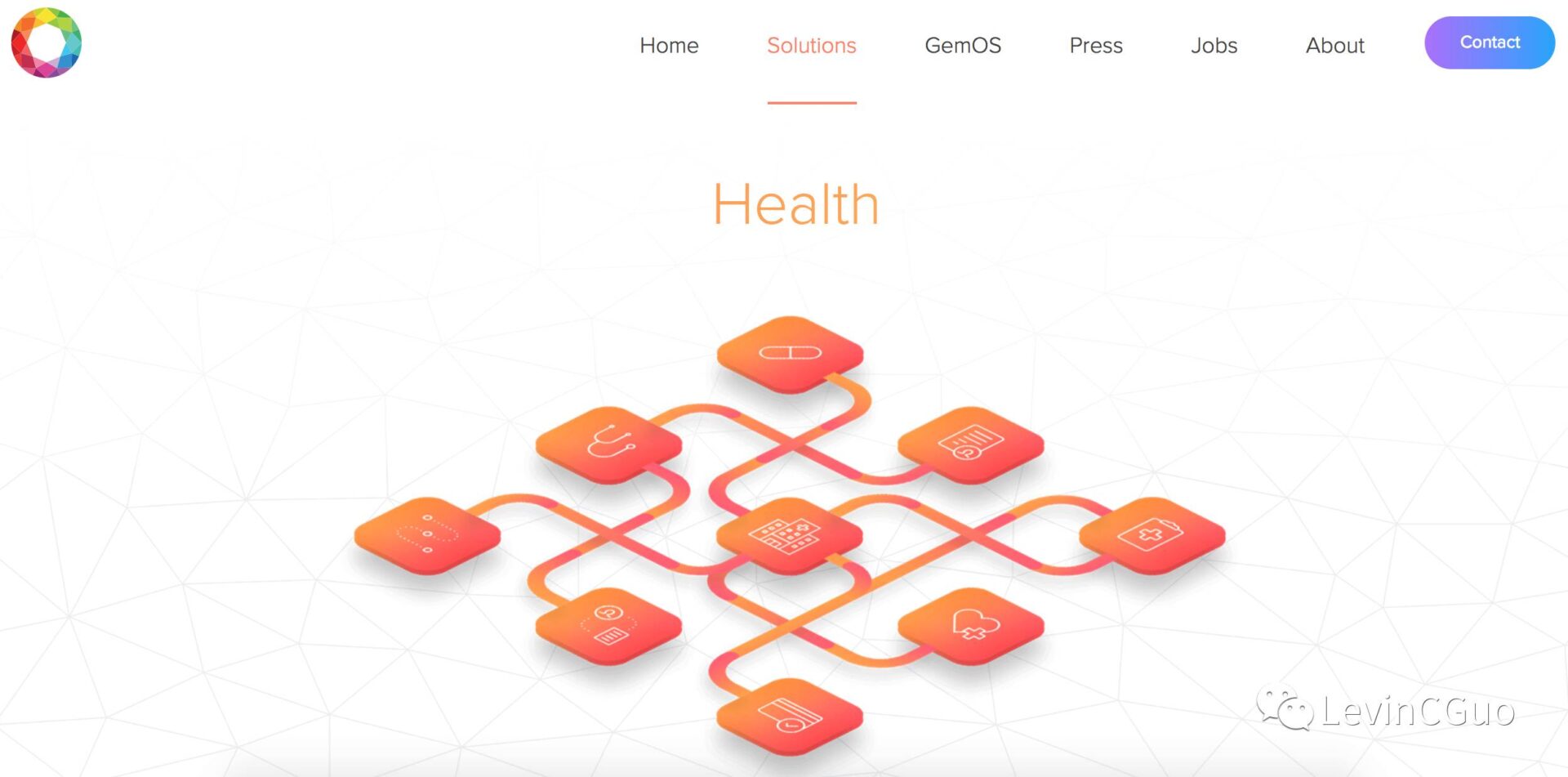
GemOS Cover | gem.co
PS.
Involved in professional-grade wearable and portable devices, traditional giants mainly include Roche Diagnostics, Abbott, etc. One cannot ignore the giants’ market share in conventional fields and their layouts and actions in the POC field. In China, companies involved in professional-grade products are mainly conventional IVD companies, and the products mainly focus on POCT.
Some companies that are doing well in this area include Yuyue, G-Biosciences, Wondfo, Kehua, Huayi, SanNuo, JiuAn, Mingde, Weidian, and TuoJing.
Conclusion:
1. Involved in related academic fields, China may be very advanced, but when it comes to technology and technological transformation industry directions, China is indeed very poor, not to mention mass production and market. Apprentices are shallow in knowledge and have seen more of just imitating, skirting regulatory edges, and randomly entering the market with various fancy gimmicks to deceive some money: really uninteresting.
2. “Half of the babies in the world look below average.” 【019 issue – Probability Bias | Liu Run5-minute Business School】
3. “Shame on you! Ugly baby judges you!” 【Ross | FRIENDS S08E13】
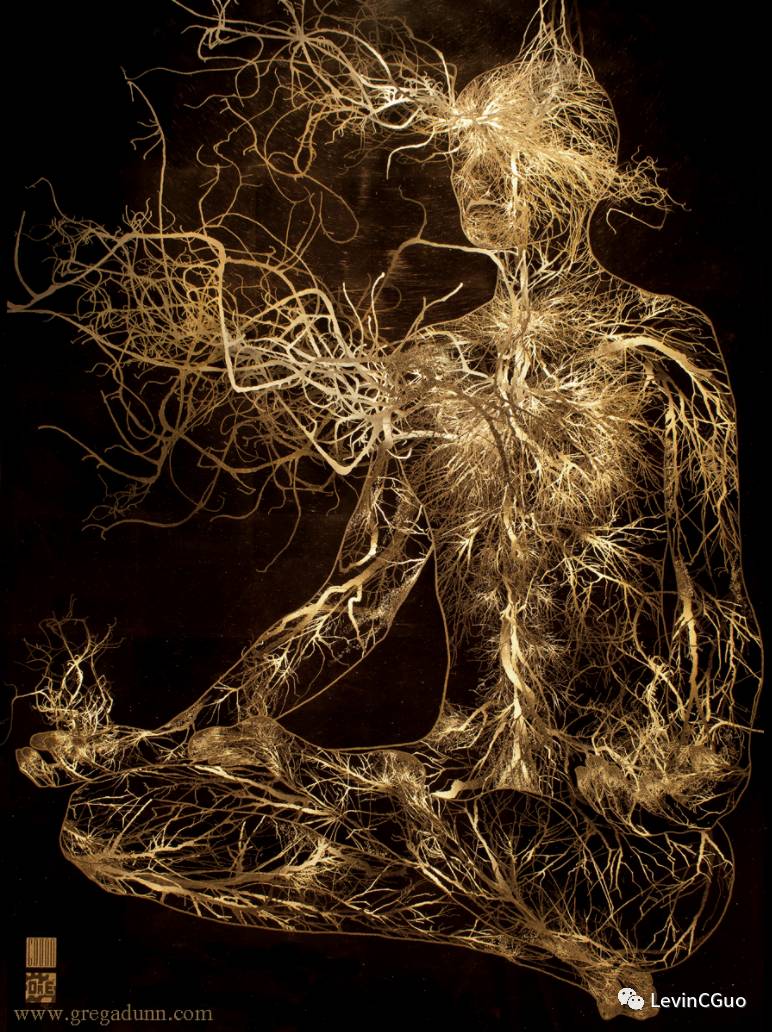
Image for entertainment purposes only | by Greg: gregadunn.com
Best wishes,
May you be safe
